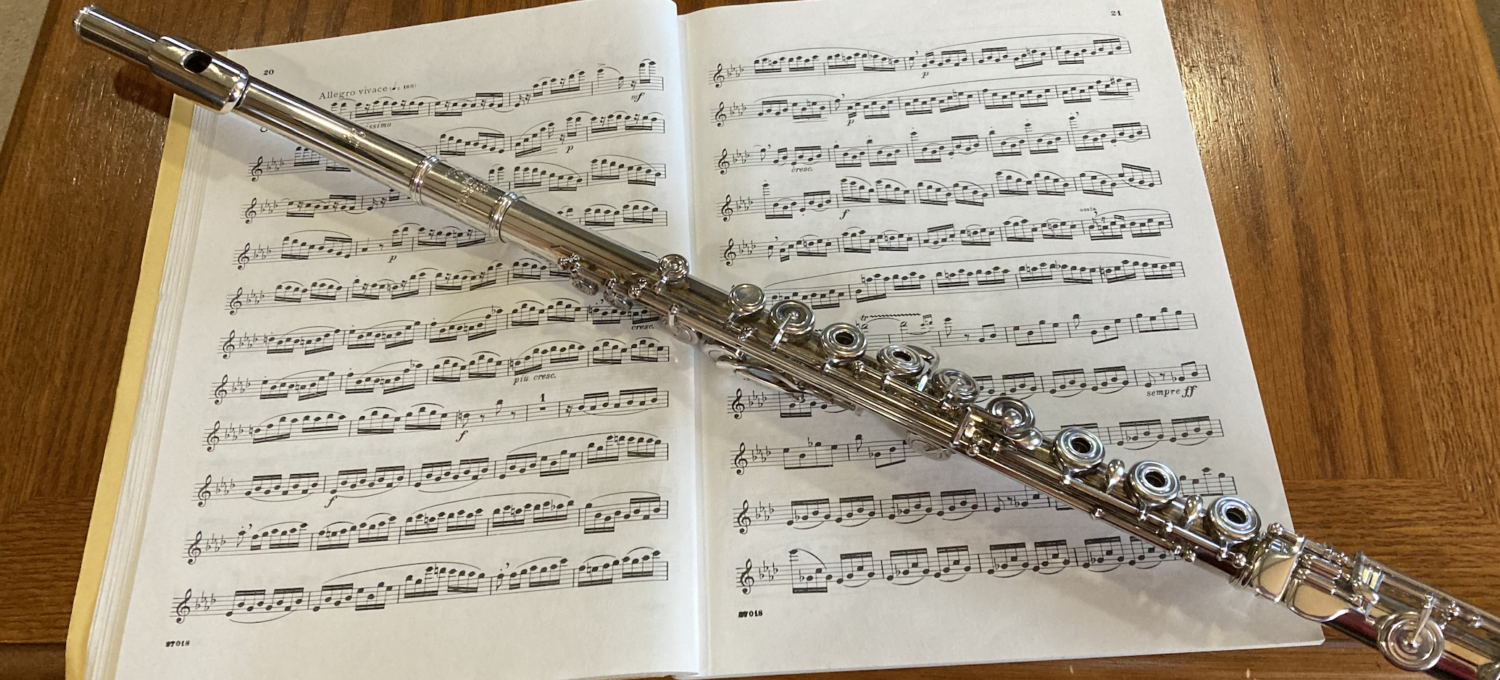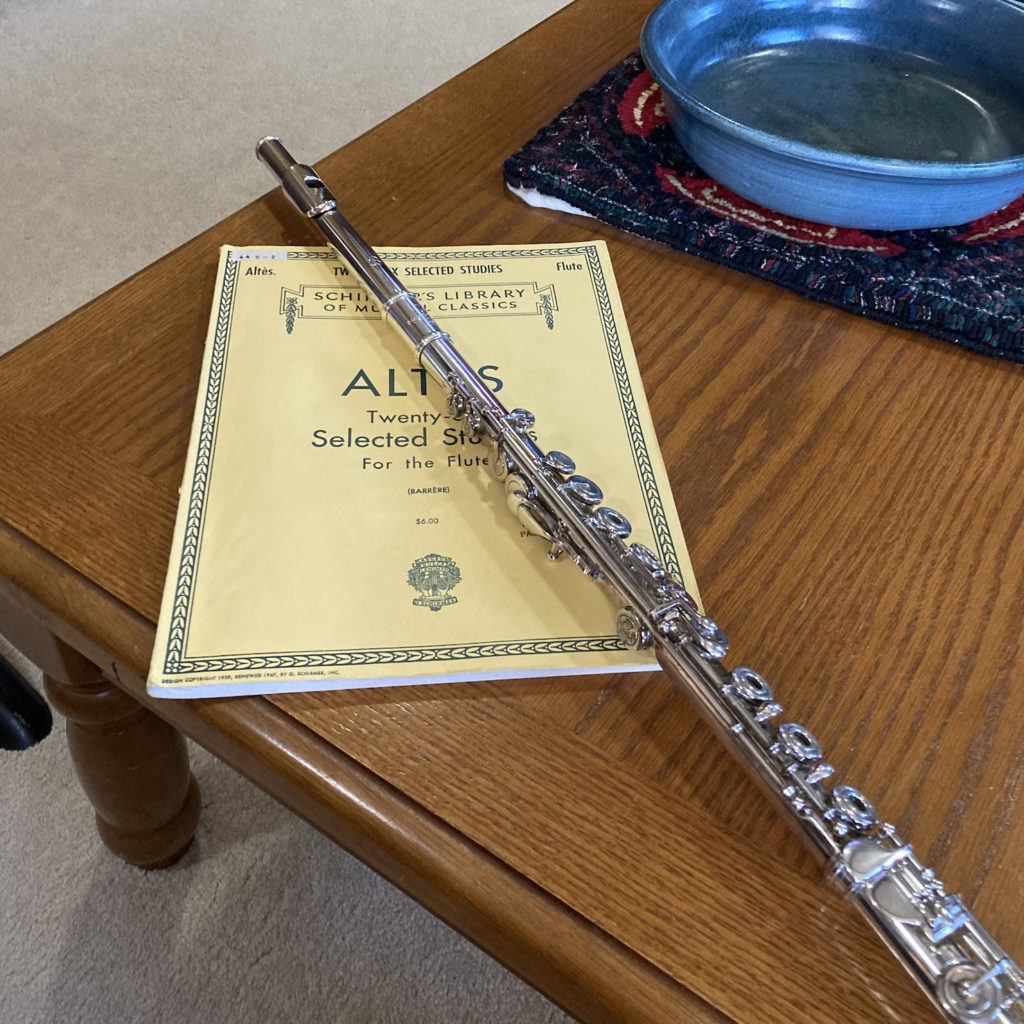Just about a year ago, one week or so before the pandemic hit, I upgraded my flute. I’d been playing a Muramatsu from 1981 for something like 23 years, since I purchased it from my teacher the summer before my senior year of college. It was a great flute, but I was longing for something new, something different, something more. I found it in a silver Brannen from 2008, and I was beyond excited to start learning my new instrument.
Cue the pandemic…I had played the Brannen in public exactly twice: once on a recital in a duet with a sweet sixth grade student of mine, and once in rehearsal for a school version of Les Mis. We had that first rehearsal on March 8, 2020, and that was it. As my playing engagements started to fall like dominoes, I wondered more than once if I had made the right decision in upgrading my flute. My best estimate is that I lost approximately the cost of this flute in canceled performances through the rest of 2020!
The silver lining of this cloud is twofold. First, my private studio is very loyal. That allowed me to go home, transition as many kids as possible into online lessons, and sit tight as I watched the worldwide situation unfold. The second silver lining is simple: I gained time.
Before the pandemic, along with all the students I was teaching and all the gigs I played, I probably spent two hours a day or more in the car, going from location to location. All of a sudden, even teaching 8-10 students daily, I had all this extra time at my disposal, and a new flute full of tendencies and possibilities and mystery.
I don’t really deal well with lots of down time. I heard actress Kristen Bell on a podcast recently, talking about the difference between being a human being and a human doing, and it resonated with me in a huge way. I was walking down the street in my neighborhood laughing out loud like a crazy person, thinking, “Yes! That’s me!” I’m a human doing, most of the time. In March, I intensely needed something to do, and here was the lovely new flute, waiting to be explored.
I’m a student of Charles DeLaney, and before that I was a student of one of his students, so my instinct is always to return to the DeLaney Daily Dozen, and that is where I started. I played long tones from the bottom to the top of my range and enjoyed the richness of sound that I could create. I played the five-note scale routine and learned where to place my left hand ring finger, now that I had an offset G (for the first time ever). I played pentatonic, whole tone, major, harmonic minor, octatonic and chromatic scales, and with every note, I remembered what it was like to practice for the sake of skill and not just for the sake of being ready for my next rehearsal. I played the four chord routines that are part of the daily dozen, and reveled in the wide range of dynamics I could create. In short, I remembered how to love my daily routine.
After a week or so, my eye began to wander to a tall bookshelf full of music. I thought, “There are things in there that I have NEVER played. I’ve got time now…” and so I pulled Andersen Op. 30 and the Schulhoff Sonata off the shelf. Do you understand how revolutionary this is? I was learning music just to learn it. I haven’t had time for that since graduate school or the years right after. When things are normal, these days I just prepare for whatever is coming up next and do my best to stay in shape during the summer, when I tend to have fewer gigs. I moved through the Ewazen Sonata, the Reinecke Concerto, Robert Dick’s Flying Lessons, and now the Altès 26 Studies—again, nothing earth shattering, just nothing I ever learned with my teachers.
At first, I used the excuse that these were pieces I might like to teach, and that’s true—they are. But I think it’s important to tell the whole truth: during this pandemic home time, I have had this precious, golden opportunity to remember what it’s like to love practice and love learning repertoire…just for me.



[…] The Flute Examiner (Jessica Dunnavant): Silver Linings and a Daily Routine […]